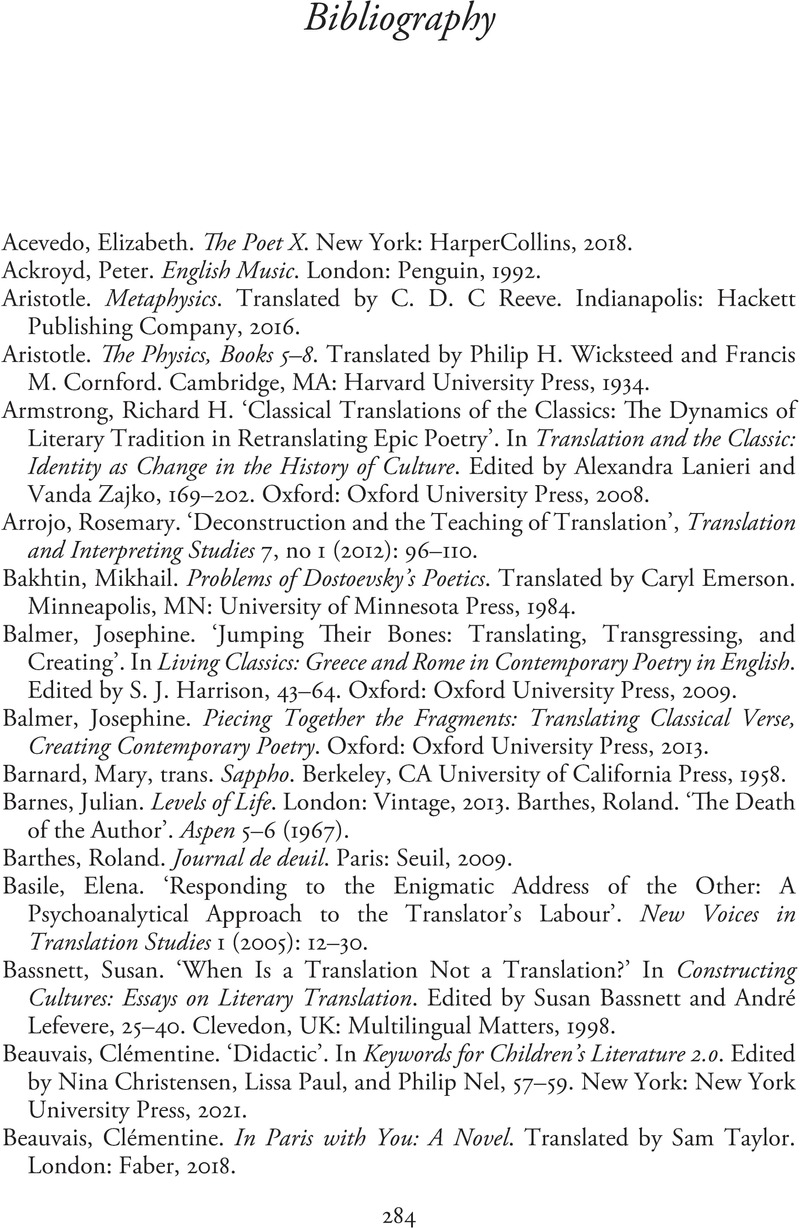Book contents
- Translation
- Translation
- Copyright page
- Dedication
- Contents
- Figures
- Contributors
- Acknowledgements
- Introduction
- Chapter 1 Solitude of the Translator
- Chapter 2 Translation, Creativity, Awareness
- Chapter 3 Anatomy of a Day in the Life of a Translator
- Chapter 4 Sturm, Drang and Slang
- Chapter 5 On X
- Chapter 6 Translating the Greeks
- Chapter 7 Beyond Faithfulness
- Chapter 8 Translation in and of Psychoanalysis
- Chapter 9 Translation across Brains and across Time
- Chapter 10 Covalent Effect
- Chapter 11 Notes on the Translator’s Space/The Editor’s Place
- Chapter 12 The State of Things
- Chapter 13 Translating into a Minor Language
- Chapter 14 An Other Language
- Chapter 15 Five Entries on Translation and Loss
- Chapter 16 ‘A Kind of Radical Positivity’
- Bibliography
- Index
- References
Bibliography
Published online by Cambridge University Press: 23 September 2022
- Translation
- Translation
- Copyright page
- Dedication
- Contents
- Figures
- Contributors
- Acknowledgements
- Introduction
- Chapter 1 Solitude of the Translator
- Chapter 2 Translation, Creativity, Awareness
- Chapter 3 Anatomy of a Day in the Life of a Translator
- Chapter 4 Sturm, Drang and Slang
- Chapter 5 On X
- Chapter 6 Translating the Greeks
- Chapter 7 Beyond Faithfulness
- Chapter 8 Translation in and of Psychoanalysis
- Chapter 9 Translation across Brains and across Time
- Chapter 10 Covalent Effect
- Chapter 11 Notes on the Translator’s Space/The Editor’s Place
- Chapter 12 The State of Things
- Chapter 13 Translating into a Minor Language
- Chapter 14 An Other Language
- Chapter 15 Five Entries on Translation and Loss
- Chapter 16 ‘A Kind of Radical Positivity’
- Bibliography
- Index
- References
Summary

- Type
- Chapter
- Information
- TranslationCrafts, Contexts, Consequences, pp. 284 - 296Publisher: Cambridge University PressPrint publication year: 2022



